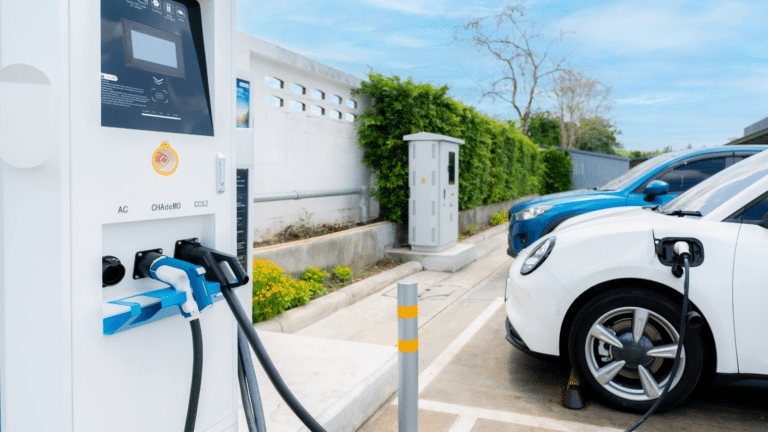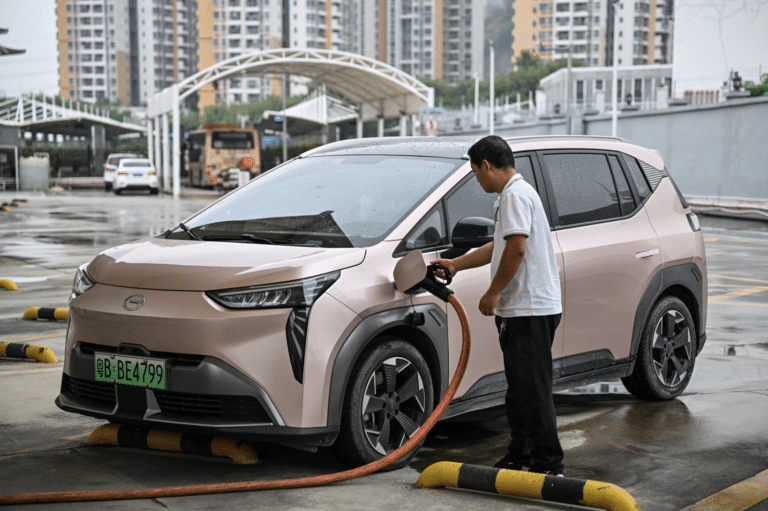This report represents the research and views of the author. It does not necessarily represent the views of the Center on Global Energy Policy. The piece may be subject to further revision. Contributions to SIPA for the benefit of CGEP are general use gifts, which gives the Center discretion in how it allocates these funds. More information is available at Our Partners. Rare cases of sponsored projects are clearly indicated. For a full list of financial supporters of the Center on Global Energy Policy at Columbia University SIPA, please visit our website at Our Partners. See below a list of members that are currently in CGEP’s Visionary Annual Circle.
-
CGEP’s Visionary Annual Circle
-
(This list is updated periodically)
Occidental Petroleum Corporation
Summary
This report summarizes the results of the 2019 survey of global electric passenger vehicle penetration and compares them with the results from the 2018 survey. The author observed many of the same trends in the 2018 and 2019 surveys. None of the passenger vehicle forecasts projected much oil demand growth over the next 25 years, and the low carbon scenarios showed a considerable decline in demand beyond 2030.
There were some significant differences between the 2019 and 2018 surveys. Forecasts this year were less optimistic about the pace of electrification than the 2018 survey, due in part to weaker economic projections resulting in fewer new vehicles sold, weaker US policy drivers, and less optimistic views about when battery costs will fall to a level that competes without subsidy to the internal combustion engine. There is an even greater dichotomy of views of EV penetration in this year’s survey between those forecasts that have a rapid transition to a low carbon world and those that do not. Despite less rapid EV penetration, passenger vehicle oil demand forecasts were moderately lower than in last year’s survey, probably due to lower projected economic growth rates and EVs becoming responsible for a greater percentage of miles driven consistent with the concept of using EVs in automated ride-hailing services.
The main findings of the report on a global basis (except where noted) are reported below:
- Underlying drivers—Population and global economic growth are important drivers of passenger vehicle oil demand. Since their growth rates are declining over time, you would expect passenger vehicle oil demand growth to decline over time, even without significant penetration of EVs.
- Population growth—Some projections use a lower population growth forecast than the UN median case. That will result in lower vehicle purchases and miles driven and thus lower oil demand even before EV penetration is taken into account.
- Economic growth—Comparing the 2019 and 2018 surveys identified significant uncertainty about economic growth rates. More than half the forecasts lowered assumptions for global economic growth, while the others raised their assumptions for economic growth. However, a number of forecasts lowered long-term economic growth assumptions for developing countries specifically. That would have a disproportionately negative impact on oil demand since developing countries have most of the projected passenger vehicle oil demand growth.
- EV sales—Two-thirds of surveyed entities reduced sales of EVs in both the short and long term versus last year’s survey. The main reasons given were slower economic growth, which reduced all new car sales, including EVs, and US federal government policy becoming more negative toward EVs and automotive fuel efficiency improvements. Another reason for slower penetration is the later timing shown in this year’s survey of when battery costs fall to a competitive level with the internal combustion engine.
- EVs in the fleet—EV share of the global passenger vehicle fleet is not projected to be substantial before 2030 given the long lead time in turning over the global automobile fleet. There is a greater divergence of views in this year’s survey versus last year’s on EVs’ market share of the global auto fleet. For example, in this year’s survey, the range of EVs in the 2040 fleet is 10 percent to 70 percent. Last year the range was from 15 percent to 60 percent. The lower carbon forecasts also had a lower overall automobile fleet size, which also gave EVs a larger market share in the global passenger vehicle pool.
- Battery cost—In both this and last year’s survey, the median timing of battery pack costs reaching $100/kWh (from an estimated $175–$200/kWh today) to become competitive with the internal combustion engine without government subsidy is 2025. However, in this year’s survey, the low carbon forecasts delayed the timing of when battery pack cost would fall to $100/kWh. In last year’s survey, a number of low carbon forecasts pegged the $100/kWh timing at 2020–2022, while in this year’s survey, the earliest low carbon forecast is timed at 2023. Possible explanations for the delay could be the periodic rise in battery metals costs when battery production is ramped up and technology breakthroughs taking longer than previously expected.
- Vehicle miles traveled (VMT)—VMT is a large driver of passenger vehicle oil demand, along with how many of those miles are driven by EVs. Ride hailing and the potential development of autonomous taxi services are likely to increase miles traveled by making it more convenient and reducing the cost of travel. This would greatly increase oil demand unless these vehicles are EVs. In the low carbon projections submitted, 40 percent to 70 percent of VMT was driven by EVs in 2040. Even the lowest EV share forecast has EVs driving 15 percent of VMT in 2040.
- Passenger vehicle oil demand—Through 2025, passenger vehicle oil demand is generally projected to be either flat or growing. Beyond 2025, most of the forecasts show passenger vehicle oil demand declining with no available forecasts showing growth. In the lowest low carbon scenario, oil demand in this sector would decline from about 25 million barrels per day today to 10 million barrels per day in 2040.
Passenger vehicle oil demand forecasts were moderately lower in the 2019 survey than the 2018 survey. That was surprising given the lower projections of EV penetration. A likely explanation is the lower economic growth in developing nations, which limits vehicle purchases and miles traveled. Another possible explanation is that this year’s survey expects a greater number of miles traveled to be driven by EVs.
- Total oil demand—Even if passenger vehicle oil demand were to decline by 2040, it doesn’t necessarily mean that total oil demand will decline because of the growth expected in sectors that are more challenging to electrify or find substitutes (e.g., truck, air, marine, petrochemicals). Through 2025, projections show flat or rising total oil demand. The average of all the forecasts indicates that total oil demand could grow slightly through 2030–2035 and decline modestly thereafter. However, there is more downside than upside risk to oil demand throughout the projection period due to the possibility of a policy-driven transition to a lower carbon world. There is still a sharp contrast between total oil demand and oil demand in the passenger sector that only has downside risk during this time period. It is important to remember that even without any oil demand growth, investment in new oil supplies would still be needed to offset the expected decline in existing production.
The remainder of the report provides the details for all aspects of EV drivers and penetration and oil demand covered by the survey.





